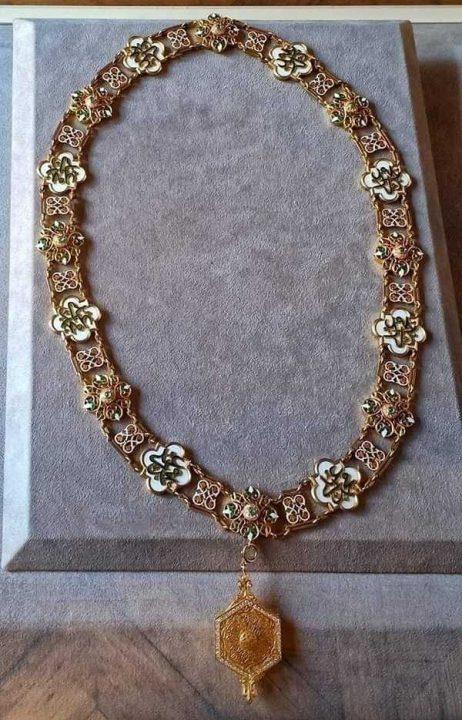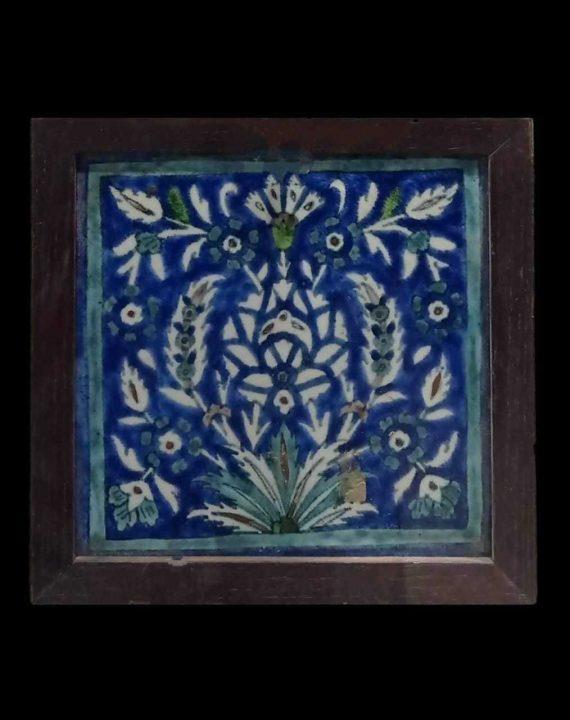
Unveiling Enchanting Splendor Of Islamic Art: Museums Present Breathtaking November Exhibits
November is a special month for art lovers in Egypt, as they can enjoy a stunning display of Islamic art at various museums across the nation. The exhibits were selected through a public vote on Facebook, as part of an innovative initiative to engage the wider community and promote cultural awareness.
The chosen artifacts showcase the exquisite blend of creativity and spirituality that characterizes Islamic art. From intricate floral decorations to mesmerizing calligraphies and writings, each piece reflects the rich tapestry of Islamic culture and its profound influence on the artistic landscape.
The exhibition coincides with the celebration of the International Day of Islamic Arts on November 18th, which honors and recognizes the immense contributions made by Islamic artists throughout history. The occasion also provides a platform to appreciate the enduring legacy of Islamic art and its relevance to contemporary society.
By involving the public in the selection process and highlighting the beauty of Islamic art, museums not only enhance cultural understanding but also create a bridge between diverse communities. Through this democratic approach, the exhibits truly represent the collective voice and choices of the people, making art appreciation a shared and empowering experience for all.
Here are some of the artefacts that you can admire at the museums:
Islamic Art Museum
A perfumed copper incense burner gilded with gold and silver from the Mamluk era, adorned with inscriptions in the Naskh script referring to the name of Sultan Al-Nasir Hassan, who ruled Egypt twice. You can find it at the Islamic Art Museum.
Coptic Museum
A manuscript on paper of the Four Gospels in Arabic, consisting of two pages adorned with geometric decorations, inside of which is written in Kufic script:“The Pure Gospel, the Shining Lamp, the Spring of Life, and the Ship of Salvation, the Pure Disciples.” You can see it at the Coptic Museum.

Sharm El-Sheikh Museum
A gold and silver brooch adorned with precious stones from the collection of Princess Fawzia. It bears written decorations in the Diwani script, which was used for official documents in the Ottoman Empire. The inscription consists of verses 51 and 52 from Surah Al-Qalam (The Pen), surrounded by geometric motifs resembling filigree. You can admire it at the Sharm El-Sheikh Museum.
Royal Jewelry Museum
A necklace belonging to Muhammad Ali Pasha, made of gold and composed of alternating decorative units bearing the name of Muhammad Ali Pasha in white, green, and red enamel. The necklace is adorned with a central ring encrusted with diamonds and emeralds. You can view it at the Royal Jewelry Museum.
Alexandria National Museum
A candlestick base made of yellow brass, decorated with a decorative band containing intertwined inscriptions on a plant background. This band is the badge that only the sultans or princes were entitled to carry. It is divided into three sections within a circular border, as follows:“Abu Al-Nasr Qa'itbay”,“Az for our noble Sultan Al-Malik Al-Ashraf”, and“Az for his victory.” You can find it at the Alexandria National Museum.

Hurghada Museum
It exhibits a Quran manuscript from the late Ottoman period, written by Sayyid Ali Nuri, and dated 1259 AH / 1843 AD. The manuscript is made of leather and paper, and it contains Surah Al-Fatiha on the first page, Surah Al-Baqarah on the second page, and the supplication for completing the recitation of the Quran on the last page.
Greek and Roman Museum: It displays a gold dinar coin from the Almoravid dynasty in Morocco, dating back to the 12th century AD. The coin has a unique design, with a square within a circle on both sides. The four corners of the square touch the circumference of the circle, forming four sections inscribed with Hashemite script phrases. The central inscriptions are engraved inside the square.
Manial Palace Museum
It exhibits a model of the star-shaped decoration from the Saraya Al-Iqama gate, which is part of the palace complex. The decoration is made of raised brass, and it features a prominent circle inside the star. The circle is adorned with inscriptions that read:“Made in Egypt.”
Royal Carriages Museum in Cairo
It displays the curtain of the Noble Sanctuary (Al-Haram Al-Sharif), which is the sacred site in Jerusalem that houses the Dome of the Rock and the Al-Aqsa Mosque. The curtain is made of black silk, embroidered with gold and silver threads, and additional pieces of red, green, and yellow Atlas silk. This curtain dates back to the 13th century AH / 19th century AD and was manufactured by order of Sultan Ghazi Mahmoud Khan, son of Sultan Abdul Hamid Khan. It is stamped with his seal and decorated with Quranic verses and Islamic art.
Jayer Anderson Museum
It displays two ceramic tiles inside a wooden frame, with the inscription“Salvation in Honesty” in white color on a turquoise-colored background. The tiles are also adorned with plant branches in different colors.
Cairo International Airport Museum 2
It exhibits a perfume bottle from the 18th century, which is a glass flask with a pointed stopper. The bottle is decorated with intricate botanical drawings of branches and flowers in various colors.
Cairo International Airport Museum 3
It displays the Sultan Hassan censer from the Mamluk era, which showcases the artist's creativity in Islamic decorations during the 8th century AH / 14th century AD. The censer is made of enameled glass and adorned with Thuluth Mamluki calligraphy, including the last verse of Surah An-Nur“Allah is the Light of the heavens and the earth...” as well as the name and titles of Sultan Hassan.
Suez National Museum
It exhibits a square-shaped ceramic tile with the phrase“Ma sha Allah” in blue color, which means“Whatever Allah wills” or“As Allah has willed it”. The tile also features plant motifs in green, turquoise, and blue colors, while the lower corners have a flower on a frosted background.
Ismailia Antiquities Museum
It displays a square ceramic tile from the Ottoman era, dating back to the 16th century AD. The tile is adorned with white, blue, and yellow botanical motifs, including a beautiful artistic arrangement of carnation leaves and flowers meticulously drawn in white color on a blue background.
Tanta Antiquities Museum
It exhibits a silver vessel from the Alawite dynasty period, which ruled Morocco from the 17th to the 20th century AD. The vessel has a hinged lid ending at the top with a handle attached to the lid. The base is slightly concave, and it features incised decorations in the upper and lower thirds, depicting repeated leafy botanical patterns. In the central part, Arabic inscriptions“And say, 'My Lord, increase me [in knowledge]'” from Surah Taha can be seen. There are also two standing men and a woman, with one of the men wearing a crown and holding a sword in his hand. The lid is adorned with botanical motifs and a band of inscriptions.
Farouk Corner Museum
It exhibits a metal and silver vessel and tray from the 20th century, which belonged to King Farouk, the last monarch of Egypt. The vessel is oval-shaped and adorned with long tassel-like patterns, including a royal crown shape. The vessel has fan-shaped handles. The lid of the vessel is decorated with miniature musical instruments, weapons, and palm-leaf fans. The tray supporting the vessel is decorated with seashell motifs and rests on legs shaped like human faces.
Kafr El-Sheikh Museum
It displays a metal vase with a pear-shaped body and two handles shaped like heads. The vase has no cover and rests on a metal base. The body is decorated with two scenes: one depicting nature and the other showing two figures surrounded by botanical motifs.
Kom Oshim Museum
It exhibits a white ceramic vase with a colorful design. The vase has an irregular drawing of the name of Allah in the middle of its mouth. The body is adorned with red, turquoise, and pink botanical motifs. In the center of the vase, there is a rectangular geometric design with Thuluth calligraphy praising Prophet Muhammad.
New Valley Antiquities Museum
It displays a brass censer with blue enamel writing of Quranic verses and the name of Sultan“Hassan Muhammad bin Qalawun” on it. The censer is a lighting device invented by Muslims to protect the flame of the lamp from the air.
Marsa Matrouh Museum
It exhibits a brass incense burner (Najafah) consisting of a tray holding seven hanging incense burners connected by three chains. The set is topped with a half-sphere-shaped cover and is used for lighting and placed in mosques and homes.
Sohag National Museum
It displays a copper helmet adorned with botanical motifs and Kufic inscriptions executed in sculpture. The helmet is from the Islamic era, when war tools were often decorated with diverse patterns and some inscriptions to give them an aesthetic appearance and, at the same time, believed to have a magical effect to ensure the holder's safety and victory.
Luxor Museum
It exhibits a silver necklace consisting of 15 flat and round beads, ending with a pendant in the shape of a crescent made of adjacent beads with intertwined decorative patterns in a modern thread.

Legal Disclaimer:
MENAFN provides the
information “as is” without warranty of any kind. We do not accept
any responsibility or liability for the accuracy, content, images,
videos, licenses, completeness, legality, or reliability of the information
contained in this article. If you have any complaints or copyright
issues related to this article, kindly contact the provider above.


















Comments
No comment